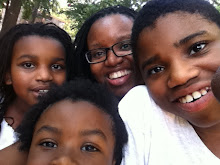I found this blog post and I'm just going to quote a bunch of it, give you the reference and you can go read it for yourself. The author, Lisa Jo Rudy, put my thoughts in words so much better than I could have. Jaedon was in a public school setting for 3 years and although I knew they were doing the best they could, it wasn't best for Jay. As I speak to therapists and teachers, I realize that there is no single clear understanding of autism, as their is of so many disorders. No 2 children look alike and managing in a classroom setting can present challenges. I won't say anymore. Read what Lisa says: (http://www.examiner.com/x-2007-Homeschooling-Examiner~y2009m2d9-Why-public-school-doesnt-work-for-kids-with-autism-part-two)
The IDEA is a terrific tool for including and accommodating the needs of many children who, in the past, were wrongly separated from their typical peers. It's a poor tool for including and accommodating the needs of children with autism. There are several reasons for this.
Children with low vision, or dyslexia, or other similar disorders were, before IDEA, excluded from the general classroom. Because their needs are well understood, and the same needs generally translate from one child to the next, it's relatively easy to help those children to successfully integrate into the general school population. All children with low vision need accommodations to either help them see (preferred seating, large type) or to substitute for sight (braille, audio books). All children with Dyslexia need extra help with reading. It's not unreasonable to provide a reading teacher for kids with Dyslexia, or a resource library of large print, audio and braille resources for children with low vision.
Children with disorders ranging from ADD to deafness are socially fairly typical. They are able to learn through imitation, pick up on body language (or tone), and connect with other children naturally. They usually want and need to fit in. In general, too, they are able to tolerate the ordinary noise, smells, sights and/or sounds of a large school setting.
Contrast all this to the child with autism.
To begin with, there is no "child with autism." Each child with autism is completely different from the next - not just in the ordinary way that people are different from one another, but in significant ways that have a huge impact on appropriate education. One child with autism is brilliant but prone to severe behavior issues. Another is non-verbal, mildly MR, and not yet potty trained. A third suffers from a seizure disorder and is easily upset by sensory overloads. Clearly, these children don't need - and in fact can't tolerate - the same academic setting. This means that every individual child with autism needs his or her own, unique program. No resource room, specialist, therapist or teacher can accommodate "autism."
Secondly, and just as importantly, the IDEA (appropriately, in most cases) begins with the assumption that children should be included in the general educational setting as much as possible. For the child with learning disabilities, physical disabilities, ADD or even MR, this really does make sense. These kids are socially as competent as anyone else, and as desirous of fitting in. But in the case of kids with autism, general inclusion (usually mainstreaming) may be a lousy option. That's because kids with autism are NOT socially competent, and may have no desire to fit in or make friends in the usual way. They tend to be victims of bullying - and often gain nothing but anxiety from the supposedly positive experience of mainstreaming.
When the child with autism doesn't do well in the generalized setting - a fairly common occurrence - there's no good place to go from there. The "autism support room" can't possibly accommodate the needs of all children with autism, since they're all different from one another. The "special ed resource room" is an even worse fit.
Where should the school place children with autism who can't thrive either in a general classroom or in an "autism support room?" In my opinion there are no easy answers to the question. And it's because of this reality that public school just doesn't work for most kids with autism.



1 comment:
interesting and it makes a lot of sense.
Post a Comment